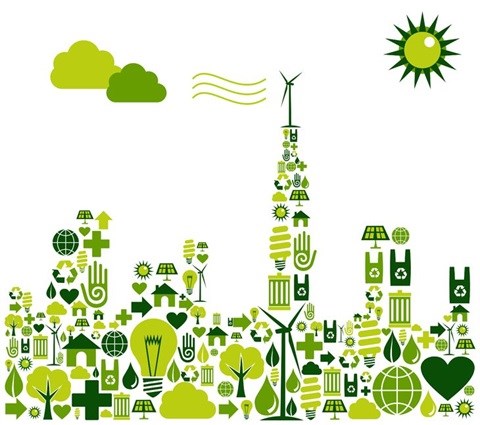Initiatives by non-state actors to cut greenhouse gas emissions are becoming increasingly significant in fighting climate change, and could bring savings of close to 1.8 gigatonnes of carbon dioxide equivalent (GtCO2e) in 2020, according to a new study by the United Nations Environment Programme (UNEP).
With the emission reduction impact of companies likely to reach 0.63 GtCO2e by 2020, phasing out inefficient lighting could save 0.05 GtCO2e in 2020 and initiatives by cities 1.08 GtCO2e in 2020.
The report, titled "Climate Commitments of Subnational Actors and Business", looked at 15 major initiatives in the areas of cities, regions, business and sectors - such as energy efficiency, methane, agriculture and finance.
It finds that 180 initiatives, involving more than 20,000 participating organisations, were in place by April 2015, indicating even greater potential for emission cuts beyond those assessed. A significant number of these initiatives were launched at the UN Secretary General's Climate Summit in September last year.
Keep ambition alive
UN under-secretary-general and UNEP executive director Achim Steiner said, "As we prepare to conclude a new global climate agreement, it is important to keep our level of ambition alive. UNEP research shows that we need to move towards carbon neutrality by mid-to-late century to head to keep global temperature rise to below 2°C. Meeting this target cannot be reached through government action alone."
"Initiatives by cities, businesses and industrial sectors to cut emissions can contribute and support national emission commitments, bringing significant savings of CO2 equivalent. Government pledges are currently expected to deliver an impact of between 5 and 7 GtCO2e by 2020, highlighting the significance of the estimated emissions reductions from non-state actors," he added.
The report focuses on analysing initiatives with concrete targets, the capacity to deliver and those with larger potential for emission reductions. It also excludes possible double counting with pledges made by states.
Cities and regions
Urban areas account for up to 76% of energy-related CO2 emissions, while the world's cities produce almost half of all greenhouse gas emissions. Therefore, cities are central to tackling climate change.
The report looks at city and regional initiatives, such as the Covenant of Mayors - a group of 6,317 city mayors who committed to exceeding the European Union target of reducing CO2 emission by 20% by 2020 compared to 1990 levels.
The three city initiatives analyzed show the potential for a reduction of 1.08 GtCO2e in 2020, while the Climate Group's States and Regions Alliance could bring 0.76 GtCO2e of additional emissions reductions in the same year.
Business
The corporate sector also has a big role to play, as the top 1,000 largest GHG-emitting companies are responsible for annual emissions of 10 GtCO2e, or around 20% of the global total.
Looking exclusively at companies taking part in initiatives such as the Business Environmental Leadership Council, Cement Sustainability Initiative and Word Wide Fund for Nature Climate Savers, the report finds that the emission reduction impact of these companies is likely to reach 0.63 GtCO2e by 2020.
However, the report warns that companies need to continue to improve their emissions performance to avoid going off track.
Sectoral
Of the 180 initiatives identified in the report, the vast majority are linked to specific sectors and industries. The report analysed five, including the UNEP-led en.lighten initiative to accelerate a global transition to energy-efficient lighting. This initiative, looking only at current partners, could save 0.05 GtCO2e in 2020.
Other areas show untapped potential for specific action, in particular energy efficiency, renewable energy, agriculture and forestry, the report finds. Although many initiatives exist in these sectors, they often lack specific objectives, the means to deliver them, or scale.
However, many of the initiatives are just getting off the ground, providing scope for further growth and learning from other actions - and therefore quantifiable goals that could lead to further emissions reductions, the report concludes.
Download the full report.

































